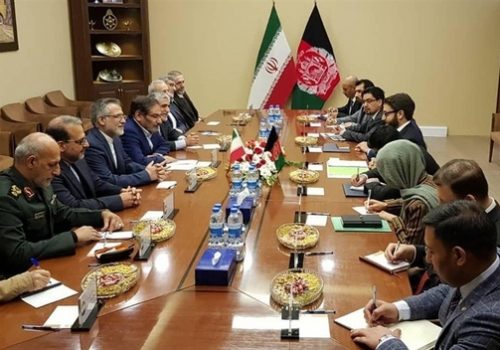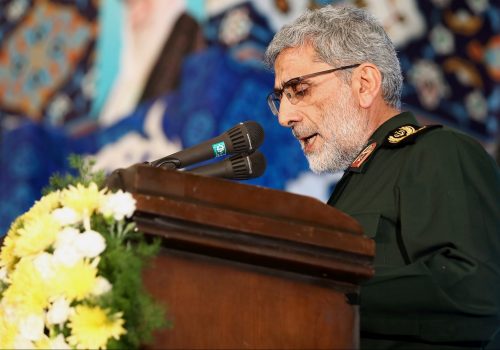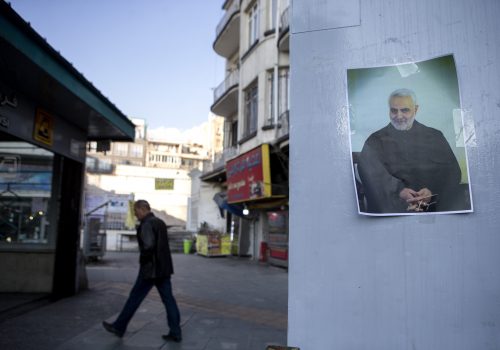Afghan migrants: Unwanted in Iran and at home
In 2016 in Herat, this author met Mahjabeen, a young Afghan woman who was helping with housekeeping at a friend’s house where I was staying. Her name—“striking beauty” in Persian—was the first thing that attracted attention. She was a newlywed and her husband, Ahmad Shah, managed to illegally get into Iran for work after several unsuccessful attempts.
“Isn’t it dangerous?” I asked naively. She laughed at the question, stating that her husband had no other choice. “My father asked him for a sum of money before he let him take me to his house as his bride,” Mahjabeen said.
A year later, in 2017, I returned to Herat, and stayed at the same place. Mahjabeen wasn’t there. It turned out that her husband, after being caught in Iran and sent back to Afghanistan several times, finally gave up and looked for a job in Herat. Ahmad Shah became employed as a cook at one of the Afghan National Army bases in Herat province, only to be killed by a Taliban attack on that base several months later.
This story comes to mind, as tensions between Iran and Afghanistan are rising over the alleged drowning of Afghan migrants in the Harirud River by Iranian border guards in early May. Though the two countries have agreed to cooperate in an investigation, emotions are high, especially, on social media.
The timing could not be worse amid the COVID-19 pandemic, political strife in Kabul, and a continuing “maximum pressure” campaign by the Trump administration, which seizes on negative reports about Iran to try to further isolate the country.
Witnesses and surviving Afghans allege that Iranian border guards beat the migrants on May 1, after they were caught attempting to illegally cross the border. They state that the guards transferred a group of about fifty-five migrants to the riverbank and forced them to jump into the water, which caused about seventeen of them to drown. Some bodies have been retrieved from the Harirud, a 1100-kilometer-long river shared by Iran, Afghanistan, and Turkmenistan.
According to the governor of Herat, Jilani Farhad, the migrants were residents of a town in Herat province and entered Iran through the Zolfaqar Valley.
Shortly after the news broke, Afghan officials took to social media to point a finger at Iran. On May 2, Herat Governor Sayed Wahid Qatali blamed Iran and promised to “settle this.” Mohammad Hanif Atmar, Afghanistan’s acting minister of foreign affairs, vowed to pursue “this unforgivable crime” with all his country’s diplomatic means. The spokesman for Afghan President Ashraf Ghani called the alleged torture and drowning “an unforgivable crime.”
Tehran denied that Iranian border guards were responsible. Abbas Mousavi, a spokesman for Iran’s Foreign Ministry, stated on May 3 that the bodies were discovered on the Afghan side of the border. He went on to say that, even though Iran had nothing to do with the deaths, they would fully cooperate with Afghan authorities in the investigation based on “good neighborliness”.
Afghanistan’s acting minister of foreign affairs ordered a commission to investigate the matter. Atmar later welcomed Iranian authorities’ agreement to launch an investigation to determine the truth and “identify those who committed this crime.”
Meanwhile, Alice Wells, the acting US assistant secretary for South Asia (who retires at the end of May), stated on May 4 that “Iran’s cruel treatment and abuse of Afghan migrants alleged in these reports is horrifying.”This prompted Iranian Foreign Minister Mohammad Javad Zarif to call the US accusations against Iran a “bitter joke.”
On May 6, Secretary of State Mike Pompeo accused Iran of “brutality” in remarks to reporters. He called on Afghan authorities “to undertake a full investigation and to seek to hold [the] perpetrators accountable.”
The US Embassy in Kabul tweeted that it shared “the concerns of the Afghan government, civil society, and people about reports of killings and abuse against Afghan migrants along the border with Iran.”
Afghans routinely cross the border into Iran and are frequently caught and deported back into Afghanistan. They endure inhumane treatment from smugglers and often lose their savings in the process. In 2019, alone, a total of 451,073 Afghans returned from Iran—a big chunk of them forced through deportation. They are usually dropped off at “Zero Point,” a neutral spot between the two countries. Deportees are subject to abuse from Iranian authorities, especially, when tensions are high between the two countries. Many of these Afghans are fleeing political and economic hardship and it is not uncommon for them to make multiple attempts to get into Iran. Others cross into Iran for seasonal work and return home after earning some money.
When the coronavirus outbreak hit Iran—which has the largest number of COVID-19 cases in the Middle East—tens of thousands of Afghans left the country for Afghanistan. Many of those returnees were from the city of Mashhad, one of Iran’s coronavirus hotspots. As a result, some Afghans brought the virus into Herat province and it became a hotspot for COVID-19 in Afghanistan. With Iran gradually opening up its economy, Afghans are slowly making their way back to Iran.
As tensions between the US and Iran have intensified, pressure on Afghan refugees and migrants in Iran has also increased. Last year, Seyed Abbas Araghchi, Iran’s deputy foreign minister, said that “it is possible that we ask our Afghan brothers and sisters to leave Iran” should US sanctions reduce Iran’s oil exports to zero. His words caused backlash and he later backtracked, calling it a “misunderstanding.”
Iranian authorities use the presence of millions of Afghan refugees and migrants as political leverage, frequently threatening to deport them. Resentment is also fueled by drug trafficking from Afghanistan into Iran, which has made Iran a primary route for drug smuggling to Europe and the rest of the world. Most refugees and migrants are hard-working people who have nothing to do with trafficking. However, this vulnerable minority makes the perfect scapegoat for Iranian authorities’ failure to stop the drug trade.
Another source of resentment is the ongoing Iranian-Afghan dispute over trans-boundary waters. Iran’s disastrous water management and dam building have contributed to water shortages along with climate change. Tension over water impacts Afghan refugees and migrants. A Majlis representative from Iran’s Khorasan province said some time ago: “We have close to 4 million Afghans in Iran. If each person uses daily 100 liters of water, the Afghans living in Iran use 400 million liters.” Afghanistan’s own dam building projects, such as the Salma Dam on the Harirud, have added to Iranian-Afghan tensions.
In recent years, with the Taliban controlling more areas in Afghanistan, Iran has developed a relationship with some of the insurgents to combat the more brutal Islamic State in Khorasan Province (IS-KP). This has also created resentment among Afghans toward Tehran. Despite new efforts at an Afghan government peace deal with the Taliban, incidents, such as the alleged drowning, will undoubtedly contribute to more negative feelings towards Iran.
With the COVID-19 pandemic causing thousands of deaths in the region, the last thing Afghanistan needs is more animosity towards its neighbors. The Iranian government should do everything in its power to uncover the truth about the drowning and bring those responsible to justice.
Fatemeh Aman is a nonresident senior fellow in the Atlantic Council’s South Asia Center. Follow her on Twitter @FatemehAman.
Image: A group of Afghan migrant workers enter Afghan territory after leaving Iran at the Islam Qala border in Herat province November 5, 2012. Picture taken November 5. REUTERS/Mohammad Shoib


